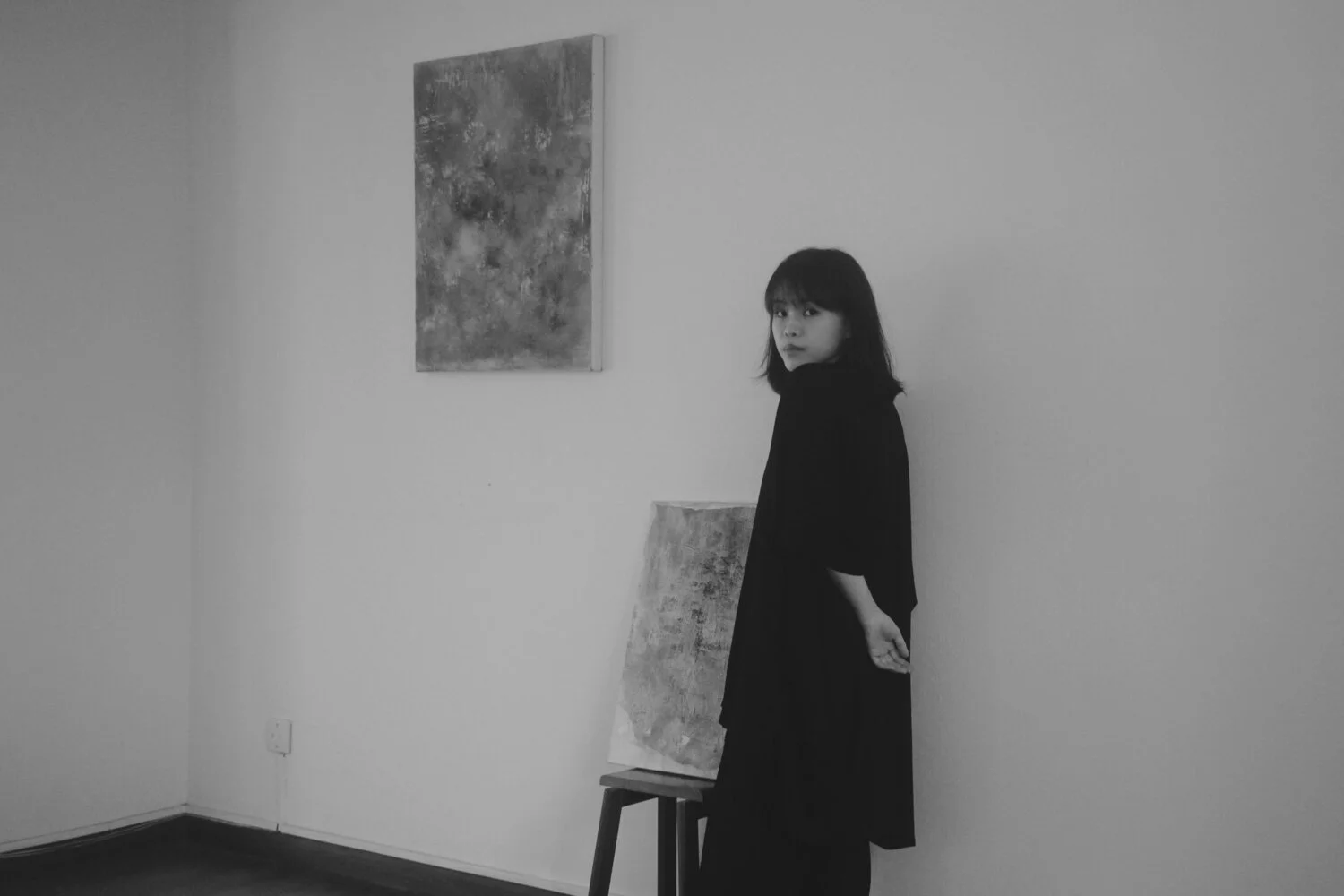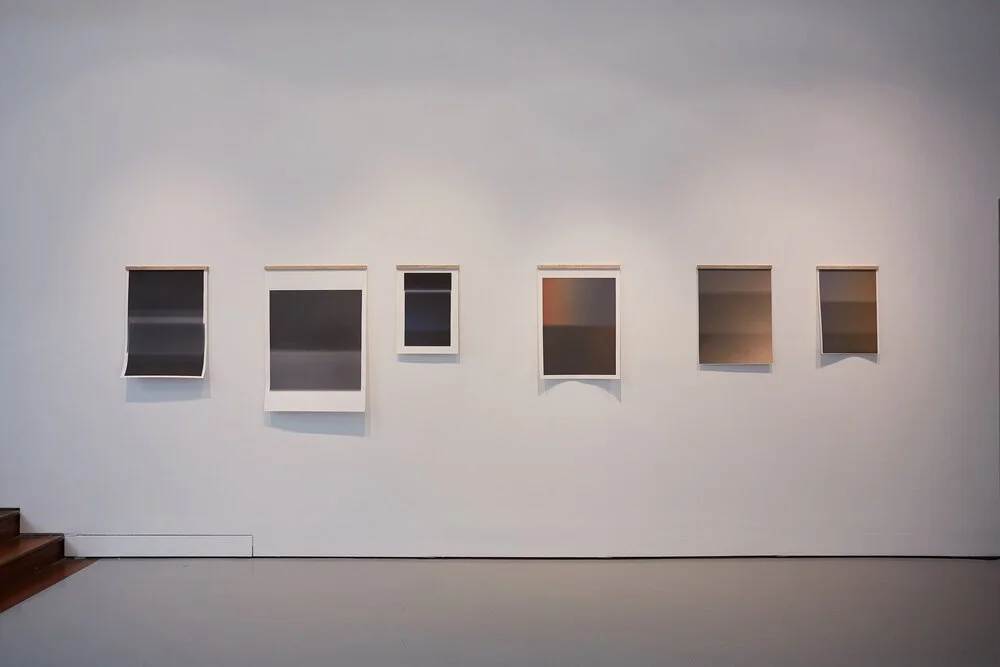Fresh Face: Liu Liling
Meditations on time and image
A&M's Fresh Face is where we profile an emerging artist from the region every month and speak to them about how they kick-started their career, how they continue to sustain their practice and what drives them as artists.
Liu Liling.
One often thinks of a photograph as a snapshot that collapses time into a single moment, a single image. Henri Cartier-Bresson described this as “the decisive moment” in classic point-and-shoot photography. Singapore artist Liu Liling hopes to suspend our understanding of time through the use of the camera and the photographic medium. Her work challenges the immediacy of digital imaging, finding ways to extend the duration taken to produce an image on the printed surface. The experience of seeing her “slow images” is a gradual unfolding of layers that offer restful moments of pause.
Liu Liling, Horizon: Hale-Slate-II, 2019, inkjet print on smooth cotton rag, 76 x 56cm. Image courtesy of the artist.
Liu Liling, Horizon: Bricktone, 2019, inkjet print on smooth cotton rag, 59.4 x 42cm. Image courtesy of the artist.
Liling’s use of the inkjet printer as an artistic tool complicates the binary of digital versus analogue. To create the Horizon series (2019-ongoing), her method involves superimposing solid planes of colour, by halting and repeating the printing process. The resultant images are varied: they could be monochromatic or a colour field of gradient hues. What connects them are distinct horizon lines that seem to recede into deep space, suggesting a landscape or a view where the sky meets the sea.
These are intimate images that draw audiences in for close viewing. To this end, the artist presents the prints unframed, without a glass barrier between the viewer and artwork. Such a presentation highlights the tactility of paper and its porous nature as a printed surface. Indeed, upon inspection, one notices charming “imperfections” such as misaligned registrations, pockmarks, smudges or streaks of ink. These traces are retained not simply as products of chance, but a recognition of the interaction between material and process.
Liu Liling, One October Day, 2019, inkjet print on transparency film, dimensions variable. Image courtesy of the artist.
Liling’s interest in the material substrate is also explored in One October Day (2019), a work that precedes the Horizon series. In this piece, she played with the surface’s porosity and printed a digital photograph on transparency film. Instead of being absorbed into the substrate, the ink stayed wet on the film surface, thus creating a highly delicate print which responded to atmospheric conditions. It became a photographic surface that allowed for a buildup of material, where old and new marks collapse onto the same picture plane. Gradually, the image becomes dissolved as dust particles collect on the surface and the wet ink separates. Time continues to be recorded long after the digital photo was taken.
Liu Liling, Haze, 2021, installation view at I_S_L_A_N_D_S, 3 – 30 September 2021. Image courtesy of Chua Chye Teck.
The incorporation of backlighting is a new element in Liling’s first solo presentation Haze (2021). Produced based on dimensions of a column in the exhibition space, the lightbox’s narrow format and repeating composition also recall the look of film rolls. The alternating bands of coral red and saturated purple reference colours observed across daybreak through nightfall, and have a calm, almost hypnotic quality. The artist describes this effect eloquently as “a visual rhythm akin to the state between one’s wakefulness and sleep.”
Interview
Liu Liling, works from Horizon series, exhibition view in The Fabric of Sympathy, 12 September - 10 October 2020. Image courtesy of Institute of Contemporary Arts, Singapore, LASALLE College of the Arts. Photograph by Wong Jing Wei.
Could you talk about your background as an artist? How did you begin using the inkjet printer as an artistic tool?
My interest in art was influenced from an early age by my parents. I have a background inpainting where I layered colours and textural material, which later opened up a fascination for surfaces in two-dimensional mediums. This informed my approach to building an image with the photographic medium, as output from the camera and printer became the material for exploration.
How have you maintained your practice after graduation? What are the important factors that have kept you
going?
I developed a habit of going on walks and bringing my camera with me where I would photograph compositions of land and water. This routine has allowed me to discover patterns that I'm drawn to, and the act of photographing serves the same purpose as a sketchbook. It is a way to help me see how colours and textures can be extracted or applied in both paintings and print.
Liu Liling, Horizon: Navy Stain, 2021, inkjet print on smooth cotton rag, 110 x 80cm. Image courtesy of the artist.
Could you elaborate on the process behind Horizon (2019-ongoing)? What do you look out for in a “successful” print?
I was first interested to see how many layers I could accumulate through printing before the paper gave way. Later, it was about capturing traces of the printing process. I choose to work with flat planes of colour, and a successful print is one where the finishing is not pristine. Instead, it highlights a pockmark, smudge or streak, which I find beautiful and inherent to the making process.
How did the opportunity for your first solo presentation Haze at I_S_L_A_N_D_S, Singapore, come about? What was your approach to this unconventional exhibition space?
Last year, I met Pey Chuan (Tan) for coffee. She told me about I_S_L_A_N_D_S, and that further opened up the possibility of showing in the space this year. She had seen prints from my Horizon series in the exhibition The Fabric of Sympathy, curated by Luke Heng.
I spent time in the Excelsior Shopping centre over different days to think about possible site-specific responses. Upon encountering the shopfront unit of I_S_L_A_N_D_S, I saw that there is a narrow column on the left that prompts the question of whether it should be sealed up or not. Eventually, I decided to work with details of the space for my presentation Haze, which consists of a lightbox that took its shape from the column’s width.
Liu Liling, Haze, 2021, installation view at I_S_L_A_N_D_S, 3 – 30 September 2021. Image courtesy of Chua Chye Teck.
Who has been a mentor or an important artistic influence? And why?
My time as Dawn Ng’s assistant has allowed me glimpses into the many facets of being an artist. I became more aware of details needed to execute both small and large-scale projects. Seeing the persistence she has in her work has also encouraged me to be fervent in pursuing initial ideas or subject matters.
I’m also grateful for the exchanges shared with Chua Chye Teck. We have discussions about art-making, and how certain things that we do are informed by observations that are not immediately apparent. It is wonderful to see through the eyes of both artists, and their support has been important to me.
What was one important piece of advice you were given?
The importance of working with hunches. I find that rings true as our initial thoughts may become the impetus for something more.
View from a temporary studio window. Image courtesy of Liu Liling.
Could you share your favourite art space or gallery in your country? Why are you drawn to that space and what does it offer to you or your practice?
STPI — Creative Workshop & Gallery. I often think about the qualities of paper, how it’s permeable, and the sensations afforded through its tactility as a material to paint and print with. It is not just a support for another medium. This year, I’ve also enjoyed going to starch, an independent artist-run space founded by Moses Tan, located at 81 Tagore Lane.
What are your hopes for your own local art scene, and regionally as well?
There are many shows put up by artists, independent spaces, and galleries throughout the year. At times, they are under-appreciated, and I hope for these exhibitions to be as valued and visited by the public. Perhaps that would contribute to a better environment for both the artists and these spaces.
Are there any upcoming exhibitions or projects that you would like to share?
I will be having a joint exhibition with Chye Teck at starch, titled Something Similar. The show is built from our dialogue over two years in a pictorial form, and will be developed into an installation at the mezzanine space.









